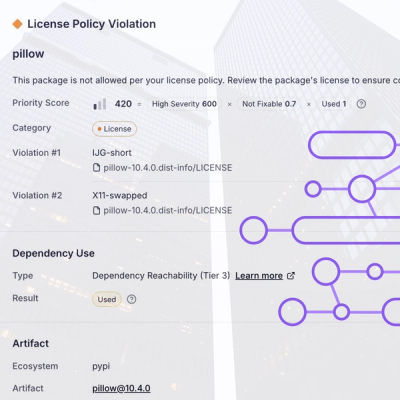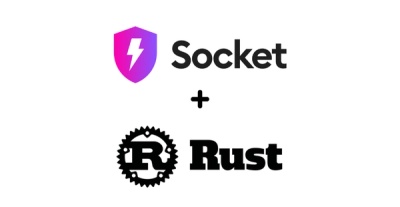
Research
/Security News
Critical Vulnerability in NestJS Devtools: Localhost RCE via Sandbox Escape
A flawed sandbox in @nestjs/devtools-integration lets attackers run code on your machine via CSRF, leading to full Remote Code Execution (RCE).
github-bot-ui
Advanced tools
A React + Redux application that serves as a base for GitHub bot UIs. It manages login, provides a page to enable or disable the bot on repositories, and has extensibility points for bots that require additional settings.

Most user will consume the application as a whole, passing some properties at
the top level to customize things. You can find a working example of the
integration in the example directory and in the server.js file.
Add the library (and React) to your project:
npm install github-bot-ui react react-dom
Create a minimal index.html file in which to inject the application:
<!doctype html>
<html>
<head>
<meta charset="utf-8">
<meta name="viewport" content="width=device-width, initial-scale=1">
</head>
<body>
<div id="container"></div>
</body>
</html>
Create an index.js file to initialize the application:
import React from 'react';
import ReactDOM from 'react-dom';
import GitHubBotUi from 'github-bot-ui';
const container = document.getElementById('container');
ReactDOM.render(
<GitHubBotUi
appName="My Bot"
gitHubUrl="https://github.com"
docsUrl="https://github.com/myorg/mybot"/>,
container
);
Create a file that aggregates the dependency CSS files. Here we'll use SCSS, but you can use any method in your project:
@import "~normalize.css";
@import "~@blueprintjs/core/dist/blueprint.css";
@import "~github-bot-ui/github-bot-ui.css";
Note that we're including the dependency styles from Blueprint as well.
Configure Webpack or another builder to compile the files and generate a
bundle. Configuring Webpack is outside the scope of this guide, but you can
find a working configuration in server.js.
The UI expects the server to expose specific endpoints to function. You can
find a mock implementation of these endpoints in server.js.
GET /api/auth/githubRedirects to the GitHub OAuth endpoint with correct parameters. The OAuth
application should be configured to redirect to /login after authentication.
The /login route is handled github-bot-ui.
GET /api/auth/github/tokenQuery Parameters:
code - the GitHub OAuth codestate - the OAuth state value provided in the initial redirectReturns an object with a token property. This property contains a
JWT for the user that just authenticated. The
token must contain the sub field, but all other fields are optional.
github-bot-ui will provide this as a Bearer token in the Authorization
header with future requests. The server usually maintains a mapping from
information in the JWT to the GitHub OAuth token for the corresponding user.
GET /api/user/reposReturns a JSON list of repositories to which the user has write access and their status with the bot. Each object in the list has the following properties:
id - (number, required) a unique numeric ID for the repositoryowner - (string, required) the user or organization that owns the
repositoryname - (string, required) the name of the repositoryisEnabled - (boolean, required) indicates if the bot is enabled for this
repositoryisUserAdmin - (boolean, required) indicates if the current user has admin
permissions on the repositoryenabledBy - (string, optional) if the bot is enabled for this repository,
the name of the enabling userenabledAt - (string, optional) if the bot is enabled for this repository,
the date and time at which it was enabled, in RFC3339/ISO8601 format.POST /api/repo/:owner/:nameEnables the bot for a repository. On success, returns 200 OK with a JSON
representation of the repository as described above.
DELETE /api/repo/:owner/:nameDisables the bot for a repository. On success, returns 204 No Content.
FAQs
React+Redux application for GitHub bot UIs
The npm package github-bot-ui receives a total of 1 weekly downloads. As such, github-bot-ui popularity was classified as not popular.
We found that github-bot-ui demonstrated a not healthy version release cadence and project activity because the last version was released a year ago. It has 1 open source maintainer collaborating on the project.
Did you know?

Socket for GitHub automatically highlights issues in each pull request and monitors the health of all your open source dependencies. Discover the contents of your packages and block harmful activity before you install or update your dependencies.

Research
/Security News
A flawed sandbox in @nestjs/devtools-integration lets attackers run code on your machine via CSRF, leading to full Remote Code Execution (RCE).

Product
Customize license detection with Socket’s new license overlays: gain control, reduce noise, and handle edge cases with precision.

Product
Socket now supports Rust and Cargo, offering package search for all users and experimental SBOM generation for enterprise projects.